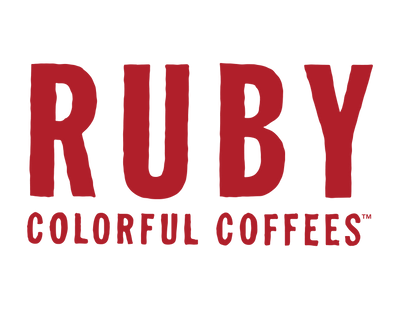“Fresh-roasted” is often used as a marketing term for coffee, and for a good reason. Freshly-roasted coffee generally contains more complex aromatics that give coffee its complexity and dynamic flavors. Freshly-roasted coffee also captures the flavors from the coffee itself before exposure to oxygen can make them stale. However, on its own, the term “freshly-roasted” isn’t always well defined, and the answer to “what is freshly-roasted coffee” can be a more complex answer.
When coffee is roasted, a lot of different reactions occur. The first is that the starchy, green coffee starts to break down and caramelize under the heat, developing sweetness and complexity of flavor in the coffee itself. Another big change is the creation of hundreds of aromatic compounds that come from the maillard reaction. Along with aromatics, coffee roasting creates a build up of gasses inside each roasted coffee bean, most of which are CO2. These gasses help trap the aromatics and preserve the flavor.
Those gasses can’t stay trapped forever, though. As soon as coffee is finished roasting, they begins slowly emitting. Coffee is then packed in a bag with a one-way valve so that off-gassing CO2 can escape but oxygen can’t get it. If the bags didn’t have a valve, they would literally start expanding like a balloon. This constant off-gassing from the coffee creates what’s known as positive pressure. This means that because gasses are leaving the coffee, the ambient air around the coffee isn’t able to become absorbed into the coffee. That positive pressure and off -gassing also pushes all the oxygen out of a sealed bag of coffee, creating a perfectly neutral resting place for roasted coffee to retain its freshness.
In this state, coffee will taste fresh for up to three months. Only, well, there’s a kicker: as soon as you open a sealed bag of coffee, it’ll start to go stale. This is where the fresh-roasted coffee moniker becomes important.
Roasted coffee will usually maintain positive pressure during off-gassing for around 14 days. That means that within two weeks of a coffee being roasted, you can open and close the bag multiple times and the coffee will slowly push out any oxygen and reset a neutral environment for freshness.
After 14 days, coffee no longer has positive pressure and is no longer off gassing, making it susceptible to going stale. A sealed bag of coffee might stay fresh for three months, but as soon as that bag is open it is exposed to oxygen, which can make the coffee start to go stale. There’s no way to really prevent this process from happening, coffee just has a distinct shelf life.
We always recommend buying smaller amounts of coffee more frequently in order to maintain fresher coffee at home. We also recommend that you brew any coffee at home within two weeks of roasting to maintain peak flavor potential.
If you do have coffee that becomes older than 14 days, you can always push the air out of the bag before re-sealing, and then even press all the air out through the one-way valve after you’ve re-sealed the bag. This limits the amount of oxygen exposure these coffees will have and will slow down the staling process.
Anytime coffee is exposed to oxygen, it risks going stale faster. That’s also why we recommend keeping the coffee within the bag it was packaged in rather than dumping the coffee out into a sealable jar. Even that action of transferring the coffee can expose it to more oxygen, making it go stale quicker. There are also people who swear by freezing their coffee, but if the bag has been opened that risks adding moisture to the coffee, which will make it go stale faster. If the bag is unopened, it’s unlikely that the freezer will add moisture to the coffee, but the coffee will continue to de-gas and it’ll likely only retain the same amount of freshness if the same sealed bag was left in a drawer or on a counter.
At Ruby, we roast every coffee to order, making sure we can offer peak freshness to all of our customers. Once you have the coffee in hand, it’s up to you to decide what timeline shows off the best flavors on your own home brew method, and we hope this article helped explain why freshness matters.
